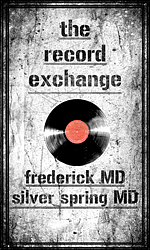More and longer than any other band, The Rolling Stones popularized and embodied rock ‘n’ roll’s glamorous decadence. But by the time of the sessions for their 1978 release, Some Girls, The Stones hadn’t put out a great album in six years.
Meanwhile, punk was exploding, and the Stones were in danger of losing not only their bad boy reputation, but their status as one of the best bands around.
Cyrus Patell investigates this interesting period in Stones’ history in Some Girls, the latest release from the 33 1/3 book series (in which authors write a short book about a single album). Patell sees Some Girls as a ’70s New York album: The Stones hung out in NYC, picked up the Big Apple’s punk attitude and sleaze through osmosis, and broke out of their rut to make a great album.
Most of the 33 1/3 books begin with the author establishing a personal connection with the album. Patell makes a point of establishing not a connection, but his credential—“By trade I am a cultural historian and a university professor. . .”—and takes care to tell us he is a real New Yorker (whatever that is) and one of the top students in his high school.
His preamble fails to ground the album in a context the reader can share, unless he or she was born on the subway (even then, does it matter much that he was the top student in his school?). To his credit, Patell is less self-obsessed than some other 33 1/3 authors—Colin Meloy, when writing about The Replacements’ Let It Be, devotes only 8 of 106 pages to information about the band.
Despite his credentials, Patell’s sweeping claims often seem both simple minded and reductive. For example, he asserts that “the inclusion of ‘Far Away Eyes’ makes Some Girls a more complete document of the Seventies in the United States. . .” because it reflects the increased political power of the south.
But The Stones had dabbled in country music since 1968 as a logical extension of their interest in the blues, and, incidentally, “Far Away Eyes” is actually about the Bakersville, California branch of country. Patell does better when discussing the Stones reaction to New York’s exploding punk scene and the disco which Jagger and co. apparently encountered in a lot of their clubbing. Stories of band dynamics and Richards’ drugs are fascinating, and The Stones did mention New York in several songs on their album. But jumping to a statement about the album reflecting and predicting political shifts in America seems like wishful thinking.
Once Patell gets down to the actual album, he dishes out some nifty bits of obscure knowledge that fans will definitely love to learn. “Shattered” has seven guitar parts; Richards wrote “Beast Of Burden;” Mick played guitar on several tracks. The Stones are an eminently quotable band, and there are a number of amusing quotes from them on a variety of topics—women and Beethoven come to mind. But Patell spends too much time strutting himself, and not enough time immersed in The Stones.


















